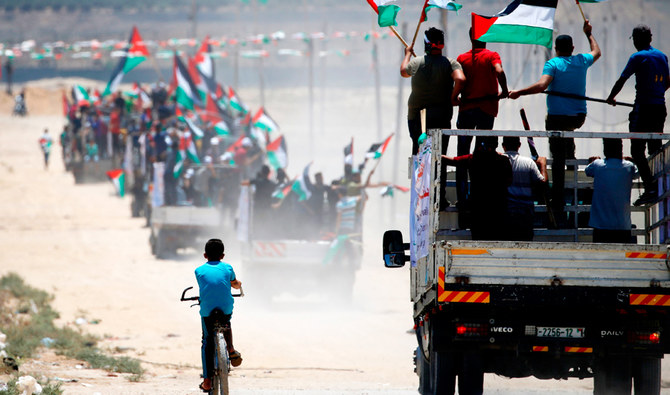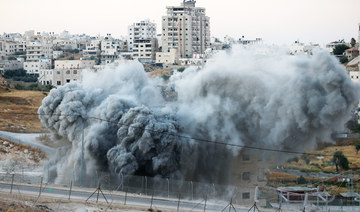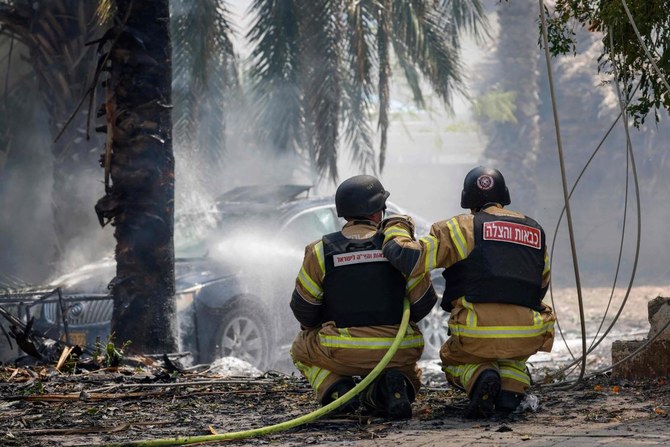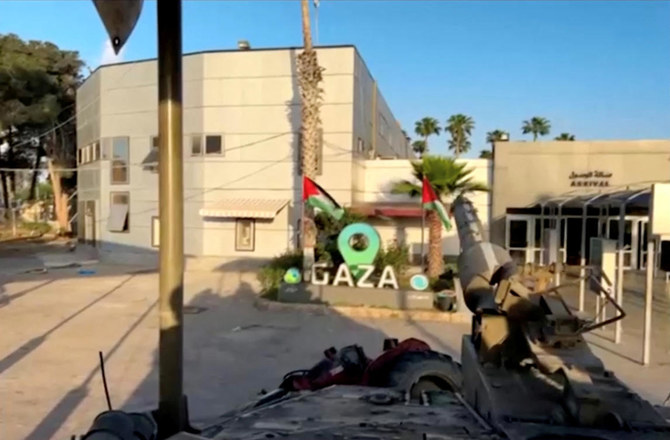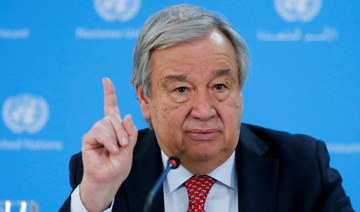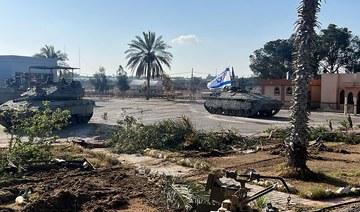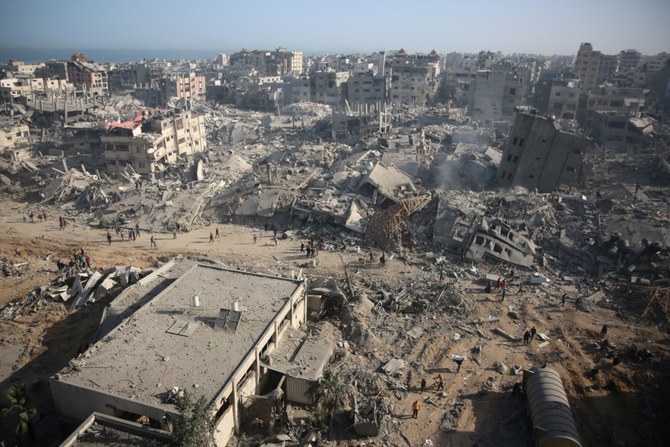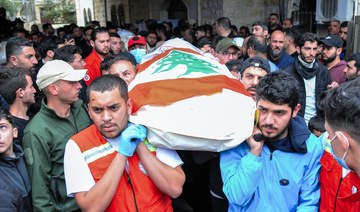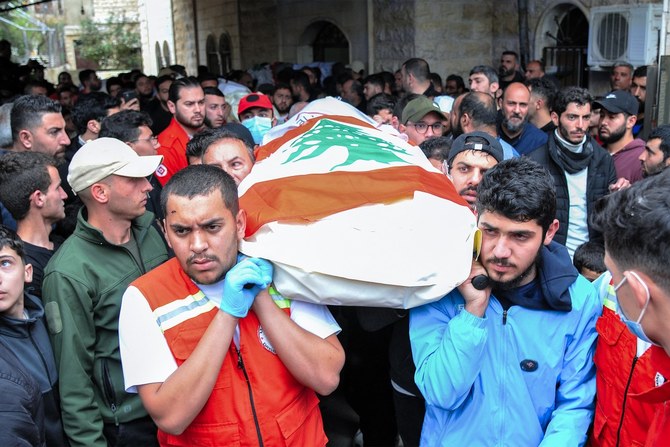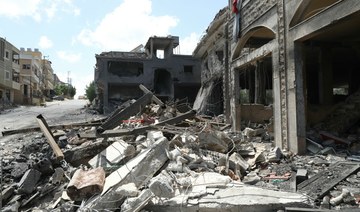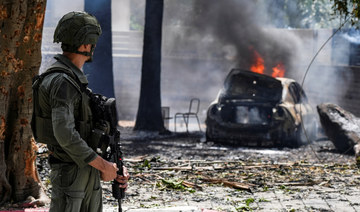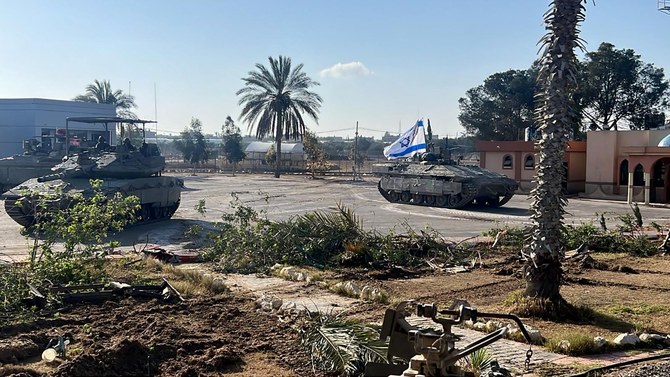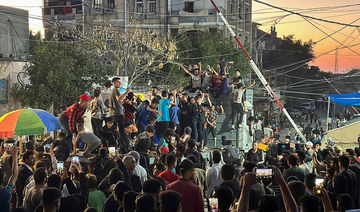JALAZON REFUGEE CAMP/WEST BANK: Hamedo Fakhouri clearly remembers the moment when the young Palestinian who worked at his neighborhood coffee shop was shot dead.
Israeli troops were lingering after an overnight arrest raid in the northern West Bank city of Tulkarem when he noticed the mentally disabled Mohammed Habali limp up the street with his wooden walking stick. Seconds later, he heard gunshots and spun around to see Habali collapse.
“I cannot forget and will not forget how this poor man was killed,” said Fakhouri.
Surveillance videos of the shooting drew outrage from Palestinians and human rights groups. Soon after, the Israeli military launched an investigation.
Witnesses say Habali was killed by Israeli troops. The military has acknowledged its forces opened fire and has not disputed the cause of his death. But seven months later, the investigation into whether soldiers were criminally at fault shows no signs of progress, illustrating what critics say is a disturbing pattern.
The Israeli military has opened investigations into 24 potentially criminal shootings of Palestinians in the occupied West Bank and the Gaza Strip over the past year, The Associated Press has found. Yet none of the cases have yielded convictions or even indictments. In most instances, the army hasn’t interviewed key witnesses or retrieved evidence from the field.
B’Tselem, Israel’s leading human rights group, grew so frustrated with the system that in 2016 it halted its decades-long practice of assisting military investigations.
“We came to the conclusion as a human rights organization, we’re actually creating more harm than good by cooperating with the system because it is in fact a whitewash mechanism,” said the group’s spokesman, Amit Galutz. The system’s success, he said, “is measured not by its ability to protect victims, but perpetrators.”
SPEEDREAD
B’Tselem, Israel’s leading human rights group, grew so frustrated with the system that in 2016 it halted its decades-long practice of assisting military investigations.
In the last eight years, nearly 200 criminal investigations into the shootings of Palestinians have secured just two convictions, according to B’Tselem. One of them, a high-profile case in which a soldier was caught on video fatally shooting a wounded Palestinian attacker who was lying on the ground, resulted in a reduced sentence of nine months.
Israel says it must regularly carry out military operations in the West Bank to prevent Palestinian attacks and protect Jewish settlements. While acknowledging investigations could be faster and better staffed, Israeli officials say the system is effective, especially in light of the challenging environment in which it operates.
“We didn’t build a robust legal system, one of the best in the world, just to help soldiers escape accountability,” said Maurice Hirsch, a former chief military prosecutor in the West Bank who is now director of legal strategies for Palestinian Media Watch, a group that monitors anti-Israel rhetoric by Palestinians.
The debate could have serious implications. The Palestinians have appealed to the International Criminal Court in The Hague to press war crimes charges against Israel. Although Israel does not recognize the court’s authority, the court can pursue cases if it finds Israel unwilling or unable to carry out justice.
A week after 22-year-old Habali was shot, Palestinian teenager Mahmoud Nakhleh sat chatting with friends outside the hardscrabble West Bank refugee camp of Jalazon. Suddenly, soldiers descended from a hilltop, provoked by a different group of youths slinging stones further down the highway.
Witnesses say Nakhleh and his friends panicked and bolted at the sight of advancing army jeeps. Troops chased them into the camp and opened fire, killing the 18-year-old Nakhleh.
Omar Hameedat, 21, watched the episode unfold from his balcony. “They started shooting spontaneously,” he said, pointing to video he captured on his cellphone. “No clashes, nothing.”
In the months since the killings of Habali and Nakhleh, Israeli authorities have neither interviewed witnesses nor requested footage from them.
Various witnesses, including Hameedat, said they are prepared to cooperate.
In both cases, the army released similar statements, saying troops had responded to “disturbances” in which “dozens of Palestinians hurled stones“— a situation that automatically loosens the rules of engagement.
Deaths in such contexts are typically explained as regrettable accidents, and “usually not the consequence of any criminal decision,” said Eli Baron, Israel’s former deputy military advocate general.
Proving criminal intent is an especially high standard in Gaza, where some 200 Palestinians, most of them unarmed, have been killed in the past year during demonstrations along the border.
Israel, which withdrew its troops from the territory in 2005, says the ruling Hamas militant group uses the protests as a cover to stage attacks and notes that many protesters have tried to break through a separation fence to enter Israel. In response, the military applies the law of armed conflict, giving soldiers more leeway to open fire. This interpretation has been challenged by rights groups and the UN
In a dim living room in Gaza’s Jabaliya refugee camp, Ibrahim Ayyoub recalled the afternoon his 14-year-old son Mohammed was shot through the head by an Israeli sniper.
“Someone who executes a child will never confess to it,” Ayyoub said. “But we have to raise our voice.”
The family filed a complaint to the military through the Palestinian Center for Human Rights, which said that in May, over a year after the event, two witnesses were asked to provide basic details to investigators over Skype. They have not heard back since.
Al Mezan Center for Human Rights said the army has not asked for testimony or evidence in more than 50 cases it represents.
The government is obligated under international law to investigate reports of human rights abuses “promptly, thoroughly and in good faith,” said Annyssa Bellal, an expert in international humanitarian law at the Geneva Academy.
A failure to do so could give the International Criminal Court jurisdiction, she said. The court opened a “preliminary investigation” into Israeli practices in 2015, but has not said when it will complete the probe.
Responding to a request for updates on the ongoing investigations, the army said it has launched seven criminal probes in Gaza and 16 in the West Bank over the past year.
Three of the cases were closed following a military police investigation. Another two cases were treated as an internal disciplinary matter and closed at the outset, including the shooting of a 16-year-old who was wounded in the West Bank while handcuffed and blindfolded.
The military also launched an investigation — but not a criminal probe — into the shooting of an AP cameraman who was struck in the leg while wearing a vest marked “PRESS” several hundred meters from the Gaza fence.
In the case of the AP journalist, neither the cameraman, who spent weeks recovering in an Israeli hospital, nor his supervisors were asked to testify. The army also never asked to see video of the shooting.
In its conclusion, the army said “no fire was directed” at the cameraman. It encouraged journalists to “exercise caution” when covering protests.
All of the remaining Gaza investigations, and several in the West Bank, including the deaths of Habali and Nakhleh, remain in the initial stage of military police review. Just two West Bank cases, including a medic killed in clashes at a refugee camp, are in the final stage of review before a recommendation is made on whether to press charges.
In a statement, the army stressed that its investigations are conducted in an “independent and effective manner.” It also said it often faces access and security challenges on the ground, making investigations “complicated and often lengthy.”
“We debrief every bullet,” Maj. Gen. Herzl Halevi, the head of Israel’s southern command, which is responsible for the Gaza border, told a conference last spring. “But we don’t always have results because of the tough conditions we’re working in.”
Hamas-ruled Gaza is off limits to Israeli investigators. Collecting evidence in Palestinian-administered parts of the West Bank can involve risky late-night operations, or relying on intermediaries who sometimes refuse to cooperate. Investigators can also struggle to get autopsy results due to the Islamic custom of quick burials.
Critics, however, say these obstacles can be overcome with technology like video conferencing, better cooperation with Palestinian security forces and improved training for investigators based on past cases going back to Israel’s 1967 seizure of the West Bank and Gaza.
They say the army has instead created a system that relies almost entirely on one-sided testimony from soldiers in which insufficient evidence becomes a common justification for closed cases.
“The army tends to give the benefit of the doubt to its own soldiers,” said Yuval Shany, a Hebrew University expert on military law.



